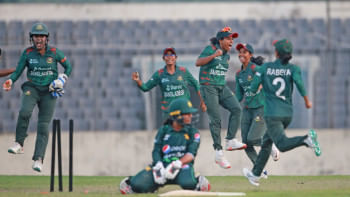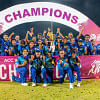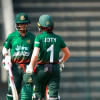Can Bangladesh women’s cricket team rise from the ashes of the crushing semifinal defeat?

The Bangladesh women's cricket team made its debut in 2007 and gained One Day International (ODI) status in 2011. Their most impressive achievement came in 2018 when they won the Women's Asia Cup. Before Sunday, when Sri Lanka became the new Women's Asia Cup champions, Bangladesh was the only other team than India to have lifted the trophy. On Friday, Bangladesh faced India in the semifinal of this year's Asia Cup looking to recreate some of that same magic and failed by a large margin. This does not however come as a surprise, since their only wins in their last thirteen games came against Thailand and Malaysia in this Asia Cup.
While Bangladesh seems to be going through a rough patch, they had established themselves as a regularly competitive side before this current phase. The semifinal match against India was an opportunity for them to carry the momentum from their previous two wins and reinforce the fact that they are still a side to be taken seriously. They failed to capitalise on their existing strengths and the manner in which they lost the match may warrant some self-reflection. The team will want to turn things around so that they can regain their self-confidence and emerge as a resilient team capable of going through difficult phases and overcoming them.
Bangladesh started the tournament by losing to the hosts, Sri Lanka. They were able to score only 111-8 in 20 overs which was not nearly a competitive score on the Dambulla ground and Sri Lanka cruised to a victory by seven wickets with 17 deliveries to spare. After that however, Bangladesh turned things around and ended their 10-match losing streak in T20Is (five of which came as recently as in April and May 2024 against India) against Thailand. It was a combined effort from the bowlers and the top order which led to a convincing victory for Bangladesh. They restricted Thailand to a total of 96/9 which Bangladesh chased down by scoring 100/3 in 17.3 overs. Bangladesh benefited from the leg spinner Rabeya Khan's 4-wicket haul and a half-century from the left-hand batting opener Murshida Khatun.
The Bangladesh women's cricket team played to their strengths in the match against Malaysia where they displayed their most impressive performance in the tournament, securing a spot in the semifinal. In their biggest victory in the 2024 Women's Asia Cup, the Bangladeshi batters exhibited their capabilities in making the most of a batting-friendly ground. Batting first, they posted their second highest T20I total of 191-2. Murshida Khatun and Nigar Sultana combined their firepower to score half-centuries at a high strike rate. This was particularly notable because Sultana has been criticised in the past for not increasing the run rate. But in this match, she remained not out with an impressive strike rate of above 167. In the second innings, a cohesive team performance saw six Bangladeshi bowlers chipping in to restrict Malaysia to 77/8 and completing a 114-run victory. Nahida Akter stood out as the star performer who took two wickets at an economy of 3.25. The two wickets brought Akter's tally of T20I wickets to 99. She would have looked to complete the historic achievement of the first woman to get 100 wickets in T20Is in the semifinal but is still yet to do so due to the crushing defeat that saw India winning the match with all 10 wickets to spare.
Since the Bangladesh team was not in its best form before the tournament, the fact they had qualified for the semifinals should have come as a welcome validation of their competitive abilities. However, it must be mentioned that there seems to exist a significant gap in the quality of cricket played by the top four teams - India, Pakistan, Sri Lanka and Bangladesh - versus the rest of the teams. While India established their dominance in the game with a consistency that's awe-inspiring, Bangladesh should have backed themselves with their own strengths. They failed to make the most of their right-arm spinners (Rabeya Khan, Shorna Akter and Rumana Ahmed), as one of the only teams in the world to regularly play three such bowlers who are known to be some of the most attacking wicket takers globally. If they were to be a match for India, all players would have had to come together to amplify their strengths. Instead, the performance we saw in the semifinal conveyed a complete absence of conviction that the team considered themselves worthy of a spot in the final.
Batting first, Bangladesh managed to post a total of only 80/8 in 20 overs. Renuka Singh - whose form had come in question ahead of the tournament and had been left out in two of the three T20Is in the series against South Africa—took three wickets in three overs, leaving the Bangladesh batting lineup in shambles. Bangladesh's opener Dilara Akter was a player, who many would have hoped would give the Indian bowlers a run for their money. She scored a six off Renuka but succumbed to a fielder off deep square in the very next delivery. Some of the other batters' shot selections were also questionable. Only two Bangladeshi batters got to double digits which is a disappointing display of the team's batting abilities in a knock-out game. One of those two batters was the captain Nigar Sultana who scored 32 off 51 deliveries and is bound to once again raise questions about her scoring rate. Though she needed to build a partnership when Bangladesh fell to 21-3, 19 dot balls in the overs between six and nine simply did not seem justified. At that point, one wonders what is the objective with which the batters are playing, since to beat India a much fiercer brand of cricket needed to be played.
Ultimately, it seemed as though the memories of the previous crushing defeats to India earlier in the year still gnawed in the Bangladeshi players' minds and that they had already lost half the battle before they appeared on the field. In 2018, when Bangladesh lifted the Asia Cup, they did so after beating India twice—once in the group stages and again in the final. It is only likely that the team would have changed since then but the Bangladeshi fans will hope that the team can rebuild and position themselves once again as the top Asian team. After all, the most commendable teams in the world are not only those who remain at the top consistently but also the teams who climb up from the depths of challenges. Bangladesh will hope to chart a similar story for themselves.
Madiha Athar Khan is a columnist for The Daily Star and a technical writer at Optimizely. She also leads the Art for Soul movement. She can be reached at [email protected]
Views expressed in this article are the author's own.
Follow The Daily Star Opinion on Facebook for the latest opinions, commentaries and analyses by experts and professionals. To contribute your article or letter to The Daily Star Opinion, see our guidelines for submission.

 For all latest news, follow The Daily Star's Google News channel.
For all latest news, follow The Daily Star's Google News channel. 










Comments